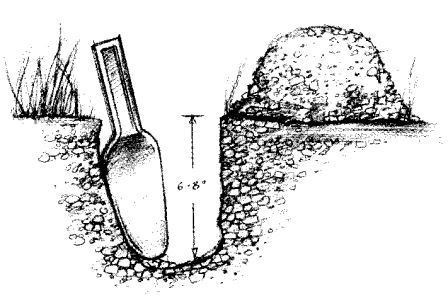Leave No Trace principlesFires:
Quiet hours:In order to insure a quality camping experience, quiet hours are enforced from 10:00 p.m. to 6:00 a.m.Tent pads or platforms:Please use them where they are provided because they protect vegetation and other important resources. Many of the group sites now have raised platforms with rings to tie down tents.
NPS Garbage and human waste:Carry your garbage out of the park. Do not put any garbage (including feminine supplies) into the toilets, bury it, burn it, or throw it in the lake!Use the vault toilets or stump privies where they are provided. Otherwise, take care to dispose of human waste properly (see picture at right):
Pets:They are a part of your family, and your actions can keep them safe if you choose to bring them to the National Lakeshore.
Protecting your park:Beaches and sandspits are some of the park's most popular attractions. They also support fragile plant communities. Please use official trails, boardwalks, and sand ladders. Avoid walking on or smashing beach grasses and lichens; they hold the sand in place. The islands provide homes for many bird and animal species. Please observe wildlife from a distance. Help keep the area's historic record intact by leaving artifacts where you find them. |
Last updated: July 11, 2022
